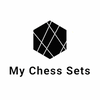Introduction to Chess and the Concept of Being Solved
Chess, a centuries-old strategic board game, involves two players who compete to checkmate their opponent's king. This complex game is renowned for its intricate tactics and deep strategy, which has captivated millions of enthusiasts worldwide. In the context of games, being solved refers to determining the outcome of the game from the initial position, given that both players play optimally. A game can be solved on different levels: as a win, a loss, or a draw for one player with optimal play.
Complexity of Chess
Chess features a playing board of 64 squares, 32 pieces, and six unique types of moves dependent on the piece type. The sheer number of possible board configurations is astronomical; it is estimated to be around 10^50 possible positions. This vast complexity makes chess an intriguing subject for discussion concerning its solvability.
The Shannon Number
The Shannon Number, named after mathematician Claude Shannon, attempts to quantify the complexity of chess. Shannon estimated the number of possible chess games at around 10^120, a figure vastly exceeding the number of atoms in the observable universe. This estimation underscores the challenge of solving chess purely by exhaustive computation.
Efforts and Methods to Solve Chess
While completely solving chess remains beyond current technological capabilities, several efforts and methods have provided partial insights into the game's depth.
Brute Force Algorithms
The brute force approach involves examining every possible move until a conclusive strategy is found. Computers like IBM's Deep Blue and Google's AlphaZero have used vast computational power and advanced algorithms to analyze millions of positions, but even these powerful machines are far from solving chess completely. Deep Blue famously defeated world champion Garry Kasparov in a series of games in 1997, while AlphaZero has been trained using machine-learning techniques to reach a superhuman level of play by learning from numerous simulated games.
Endgame Tablebases
An area where chess has been partially solved is in the endgame. Endgame tablebases contain pre-calculated exhaustive analyses of all possible endgame positions with a limited number of pieces. These tablebases can definitively state the optimal move sequences for up to seven pieces on the board, including the kings. As computing power increases and algorithms improve, the number of pieces analyzed simultaneously by endgame tablebases will increase, potentially offering insights into more complex multiple-piece endgames.
Theoretical Limits on Solving Chess
Despite advancements in computing, the solving of chess in its entirety may remain elusive due to its profound complexity. Each added piece on the board represents an exponential increase in the number of possible positions, making exhaustive computation increasingly impractical.
Implications for Artificial Intelligence
The quest to solve chess also carries broader implications for the field of artificial intelligence (AI). Techniques developed in pursuing an answer to chess's solvability are applicable in more practical realms requiring strategic decision-making and optimization.
Conclusion: Is Chess Solvable?
While theoretically possible, practically solving chess completely may not happen with foreseeable technology. The solution would not only reveal whether the perfectly played game ends in a win for white, a win for black, or a draw, but also significantly impact the philosophical and competitive aspects of chess, potentially rendering the game less intriguing. For now, the mystery of chess remains one of its most enduring and appealing qualities, continuing to challenge the finest minds in both computational and traditional play arenas.
Explore our large collection of luxurious chess sets!